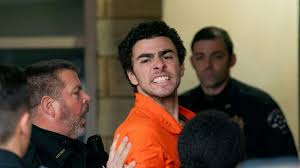This post contains spoilers, some images of gun violence, and discussion of political violence. I do not condone violence of any kind.
How many times have you heard someone say: “You talkin’ to me?!” or “The first rule of fight club is you do not talk about fight club.” Too many times may be your answer, but that’s because these films are so widely cherished. Both films follow men consumed by depression in a lonely city who decide to use violence to make their message heard, and to try to make their world “better.” Both men are unseen by others and the only way, they believe, that they can make people notice them is through hurting the people they believe hurt them. But why do these two films move people so greatly? And how do they resonate in our world now?
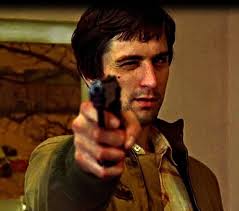
Taxi Driver. DeviantArt.
Taxi Driver is a 1976 film that follows a lonely Vietnam veteran named Travis Bickle played by Robert De Niro. Travis is a man who struggles to find a sense of warmth and meaningful connection with other people, and grows increasingly frustrated with the coldness, lust, and sin that seems inescapable in New York after the Vietnam war. He struggles with insomnia so he becomes a taxi cab driver to fill the hours of sleepless nights. He also writes frequently in a diary during the daytime in his apartment on his hatred of the morally decrepit city, loneliness, his disgust with prostitutes, crime, and the monotony of his life. He also spends his free time going to adult movies.
One day on the street Travis sees a beautiful woman passing by him on her way into work, and he becomes infatuated with her. From his taxi, Travis watches the woman for many days in the building where she works promoting the campaign of NYC mayoral candidate Charles Palantine. Eventually, Travis works up the courage to go inside the building to ask the woman on a date. Travis learns that her name is Betsy, and they have a brief but meaningful conversation at a diner during Betsy’s break. They talk about feeling like there was something between them from the way they talked to each other when Travis initially went to introduce himself. They felt something rare, strong and true.
For their first date, Travis takes Betsy to a movie but it’s not just any movie. Betsy is stunned, and rightly so, when she realizes that Travis has taken her to a dirty movie. Travis tries to fend off Betsy’s worries by telling her that couples go to see dirty movies all the time. But Betsy is so uncomfortable and offended that she leaves the theater mere minutes into the movie.
This incident shows Travis’ disassociation from the feelings of other people and social norms. Further, his lust for a woman seemed to have been so strong that he did not even consider how offensive and brazen it was of him to take Betsy to see a dirty movie on their first date. Just when Travis had finally found a person that he connected with, he messed things up big time. But Travis blames this failure on Betsy being just another cold, uncaring piece of scum in the city. In his eyes, he was the victim who was let down. But he was really too blinded by his own sexual desire for Betsy to see the outrageous indecency of his actions towards her. Betsy’s rejection sends Travis on a downward spiral and he starts to see every person as cold, evil sinners.
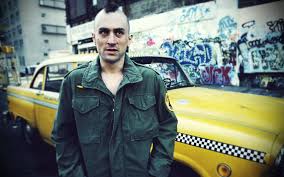
Taxi Driver. Flickr.
Eventually, walking down the street, Travis recognizes a child prostitute named Iris that once attempted to frantically get into his taxi before a pimp named Sport yanked her out then gave Travis money to forget what he saw. Travis pretends to be an interested customer to meet Iris. He openly talks to her and tries to learn how Iris ended up as a child prostitute. Travis wants to remove her from this horrible, dangerous situation but Iris is not eager to stop being a prostitute because she thinks that Sport genuinely loves her. Travis pities Iris and is outraged by Sport’s treatment of her, and by Iris’ unwillingness to desire anything other than being a prostitute.
Iris becomes the main driving force for Travis’ subsequent actions, and the disruption that moves him to attack the vice of the city. He turns himself into a walking weapon machine by attaching a mechanism to his arm which will let him quickly and discreetly draw a gun. Travis decides that his first target will be Charles Palantine the mayoral candidate of NYC, and the man whom Betsy works for. Travis has also had a conversation with Palantine about “cleaning up the city” while driving him in his taxi one night. Even though Palantine seemed like a decent man committed to making the city better, Travis may have targeted Palantine because of his visibility as a mayoral candidate for one of the largest city in the world, and the panic that would come from this assassination. However, his attempt to assassinate Palantine at his campaign rally is quickly foiled by the Secret Service yet Travis is miraculously able to run away unscathed. He alters his plan, deciding to target the pimps that Iris works for. Travis returns to the apartment where Iris works, and kills Sport and the other men involved in the prostitution scheme.
Travis has not truly felt loved or seen by anyone so he makes himself seen. He makes sure he will stand out and be a different man than he was before. A man who doesn’t take any crap from anyone. A man who doesn’t have to listen to the mayors or pimps of the city who try to tell him that this is just the way it is. He changes his appearance, dawning a Mohawk, army jacket and sunglasses.
After Travis recovers from his injuries he oddly manages to avoid prison time, and goes back to being a cabbie, hailed a hero in the newspapers for saving Iris from being further exploited by Sport and his cronies. Betsy sees Travis again when she takes a ride home in his cab. When the ride is over, Travis calmly shoos away the money she offers him, takes one last long gaze at her, then drives off as Betsy watches his cab roll away down the street. The viewers are left with a sense of closure as Travis effectively eliminated a source of evil in the city by killing Sport and the other men involved in his prostitution scheme. Although it was extreme, illegal, and not the responsibility of Travis to go to the point of killing those men, we can see that Travis finally seems at peace and is content in his life as a cabbie, no longer yearning to cause any more disruption, vengeance or pain for anyone else.
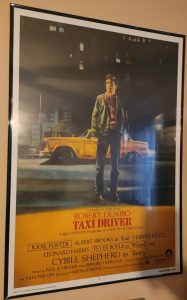
At the time of its release, Taxi Driver was instantly hailed as “a must see” and “one of the greatest films of all time.” Acclaimed film critics were enthralled by the life that the city itself seemed to possess. The grittiness, the power, the maleficence of the city and the not so innocent people that roam the streets, especially when night falls and the electric city lights from the signs and buildings make one dizzy from the immensity of it all. Additionally, many of the fans of this film do not admire its violence just for the sake of compelling action and gore, but more so for what the tendency towards choosing violence says about humanity, as well as the complications surrounding the popular and problematic theme in films that violence is heroic, and is the only effective path towards a better life. Further, the film shows the poverty, and the filth of the city that Travis has to live in. The audience is forced to see this man who constantly feels invisible in the conditions he lives in. The film gives Travis a voice to express the emotional strain of living in a cold, busy city. It makes visible a man who becomes obsessed with being seen by others. (Taxi Driver, Wikipedia).
The romanticization of vulnerable but violent aggrieved men recently became a public issue again when Luigi Mangione was arrested and charged for murdering the CEO of UnitedHealthcare, Brian Thompson in December of 2024. It is important to note that all suspects of a crime are innocent unless proven guilty in the court of law. I will also note that I am not condoning violence, nor am I suggesting that the film inspired Mangione’s actions at all; I am just noting the similarities in the qualities and potential actions of both men. Mangione currently maintains that he is innocent of this crime, but has spoken out against the U.S government and its healthcare system, verbally and through his written manifesto.
Mangione, like Travis, seems to be a man who felt neglected and let down by the officials of society, who was burdened with pain, and who may have then taken matters into his own hands by allegedly shooting a man whom Mangione deemed as one source of his pain. This is similar to when Travis shot and killed the pimps that took advantage of Iris and other girls. Luigi may have viewed Thompson as one of the people who contributed not only to the deaths of the many unfortunate people who were denied the healthcare that they likely have needed to survive, but also a man who was part of the system that could not get rid of Mangione’s chronic back pain. The burden of this physical pain may have driven him to commit this crime if he is proven guilty.
Travis and Mangione were both overwhelmingly praised for their apparent shooting and killing of men. They were both seen as cult heroes, admired for their one brief act of violence. People will always say that murder is wrong yet the crimes that these two men may have committed are seen as justifiable by their supporters because of great outrage at the people in charge, those with the real power. Furthermore, I think Taxi Driver moves people so greatly because many people want the world to be better, they also want to be seen and valued by others. Travis was able to do that through his use of violence. He was not seen as a criminal for his actions but as a hero. People want a hero to look up to. People also want to be the hero that saves others from more pain and hardship.
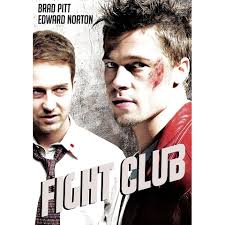
Fight Club. Printerval.
Fight Club is a 1999 film from the perspective of an unnamed protagonist played by Edward Norton. Norton’s character narrates his life as a mundane office worker for a car insurance company, and, like Travis Bickle, struggles with severe insomnia and depression. After failing to receive medication from his doctor, and other failed attempts to get more sleep, he discovers that the only thing that will allow him to be able to stay asleep at night is going to meetings at a church for conditions that he doesn’t have just so he can hug people and cry to release his stress. This goes well for him until another “faker” named Marla Singer disrupts his routine by also attending the meetings. The narrator makes many attempts to get Singer to stop attending the meetings, but she miraculously returns again and again until they are able to tolerate and even care for each other.
This is somewhat like Travis and Betsy. Betsy was unsettled at first by Travis’ many occasions of watching her from his taxi, and she was hesitant to open up to him when Travis came to introduce himself, but there was a small connection and understanding between them, and they came to acknowledge that openly. However, Travis’ rude and sexually charged act of taking Betsy to a porn movie on their first date, upset Betsy greatly. She was even more disturbed by Travis’ anger and use of force by pulling on her arm when she tried to leave. Travis had pushed Betsy away which is what the narrator in Fight Club would do to Marla as well. But in the last scene of both films there is closure between this romantic conflict and a connection sparks again, if only just briefly as Marla and the narrator stand together holding hands. While Betsy takes a ride in Travis’ taxi, looking compassionately in his direction, and affectionately mentioning how he is viewed as a hero in the newspapers.
The narrator meets a man named Tyler Durden, played by Brad Pitt, while on an airplane traveling for work. Durden stands out from everybody else in the film immediately with his spiked hair, sunglasses, and blood red jacket over his Hawaiian shirt. Durden is extremely eccentric, charismatic, silly, and knowledgeable, especially about soap as soapmaking is his way of making a living. Durden gives the narrator his business card while they are on the airplane. After the narrator returns home stunned to find that his apartment had burned down the first person he can think of to call is Durden. The narrator wants some advice about how he should go about his life since he is apparently doing something wrong for all of the misfortunes that have occurred to him. They meet up at a bar and the first fight club starts when Durden dares the narrator to hit him after they leave the bar. Durden was trying to get the narrator to let go of his worries, have a bit of fun, and to take out his suppressed frustrations on Durden. From this moment on the narrator learns to embrace Durden’s fun and careless lifestyle. Durden acts on a whim, takes pleasure in living life, and does not let inconveniences worry him or set him back. This is what draws the narrator to admire Durden and his way of living. They live together at Durden’s run down house in a deserted factory town. They have reckless fun and make soap for a while. Both men start an official public fight club in the basement of the bar, and it rapidly grows from there, even spreading across the country.

Fight Club. Flickr
Fight club goes from being a place where men can have an outlet to physically release their frustrations each week and partake in reckless pranks, to an eerie cult with the greater purpose of causing violent disruption in corporate America. However, the narrator becomes deeply concerned when he becomes aware of the outrageously violent crimes that Durden and the other fight club members have been committing without the narrator’s knowledge. For instance, they set a building on fire in a way that the windows engulfed in flames formed a smiley face, they further used a city landmark to destroy a Starbucks by breaking off a globe-shaped piece of a statue, and letting it roll into the coffee shop. Yet Durden refuses to stop his actions, and the expansion of the fight club.
After Durden urges the narrator to stop trying to control everything, both men end up getting into a car crash, then Durden later disappears. The narrator desperately searches for Durden across the country. The big twist in the film occurs when the narrator realizes that he is Tyler Durden, and has been suffering from multiple personality disorder. The narrator has been hallucinating the version of himself that he wishes to be. Cooler, more attractive, more confident, and rebellious. The real Durden fails to stop the plans of blowing up multiple bank buildings, but he succeeds in taking control of his identity, and dissolving his hallucination by shooting himself in the head. He survives but is severely injured. Marla, brought to Durden against her will by some fight club members, stands hand and hand with Durden as they watch the bank buildings explode and collapse one by one.
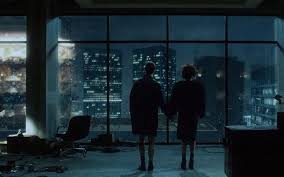
Fight Club. Free Malaysia Today.
The similarities between the themes of Fight Club and the incessant turmoil that encompasses current president Donald Trump is a pretty easy connection to make. Trump is a man known to say controversial and offensive things without caring. This is why his die-hard supporters latch onto him and love him so fiercely. Particularly, Trump’s white male supporters who see a man flaunting his white privilege, and his potentially harmful views to the world. Like Fight Club’s narrator initially feels about Durden, they see a powerful man that makes them feel like everything will work out for them.
In a similar way, Durden’s followers are completely faithful to him, and willing to do extremely reckless and illegal things to show their support for him and his cause. This is reminiscent of the horrific January 6th Capital Riots in response to Trump’s loss of the 2020 presidential election. Here, men, as well as some women, were so frustrated with the world, and their sense of powerlessness that they decided to take reckless action against the people they viewed as causing their pain. Their enemy was the U.S government because it did not do as they wished. However, they now have their beloved leader back in office, and many drastic economical and social changes are being made very rapidly, and are leading to uncertainty and even outrage in our world right now.
Despite being released decades ago as well as decades apart, both Taxi Driver and Fight Club speak to the still prevalent issue of toxic masculinity and violence in America, as well as how poor mental health, and misinformation sometimes leads to violence that could have been prevented. Furthermore, the ambiguity of the endings of both films speak to the complexity of knowing what is real. Some viewers are left wondering what is true and what is fake. Recall in Taxi Driver that Travis has a shootout at the apartment that houses young prostitutes. He kills a few men, and even gets shot himself. We see that he recovers later, and continues being a cabbie. But did the shooting really occur, or did Travis just imagine the revenge he wished to take against the pimps? Were we just viewing his imaginary heroism? Likewise, were all those buildings at the end of Fight Club really blown up? Or was that another hallucination from the narrator who suffers from MPD?
Most of all, these films pose a final question. Why must violence be the only effective answer even though we know it is wrong? And why are some instances of violence widely viewed as heroic or even patriotic in America while others are unacceptable?

